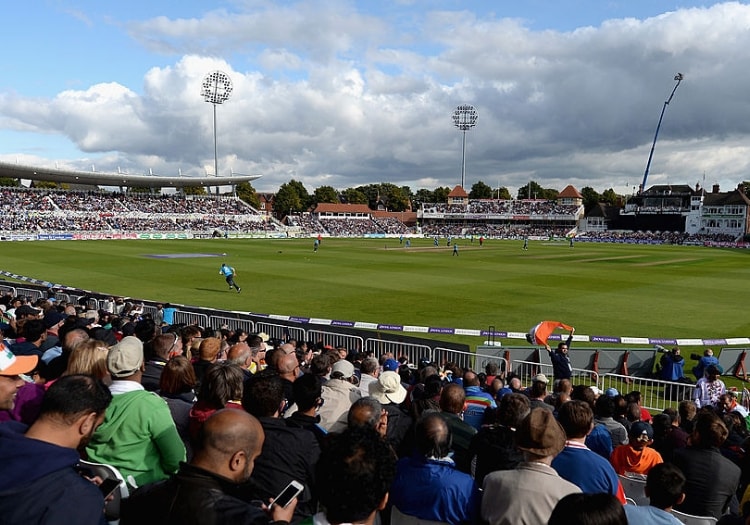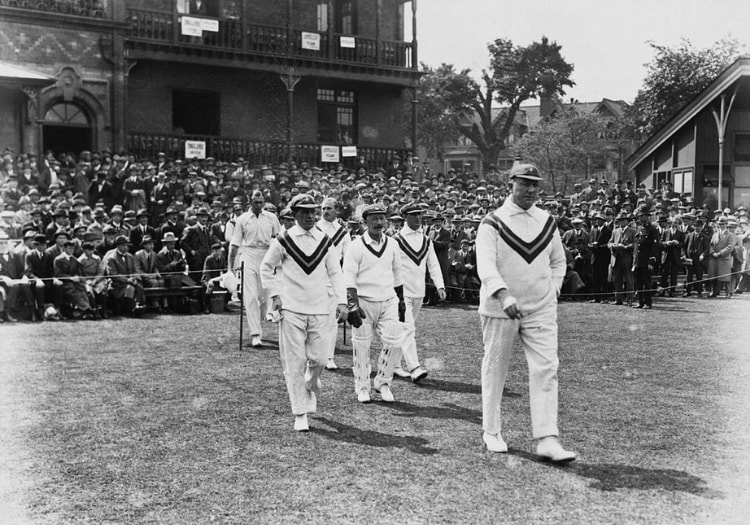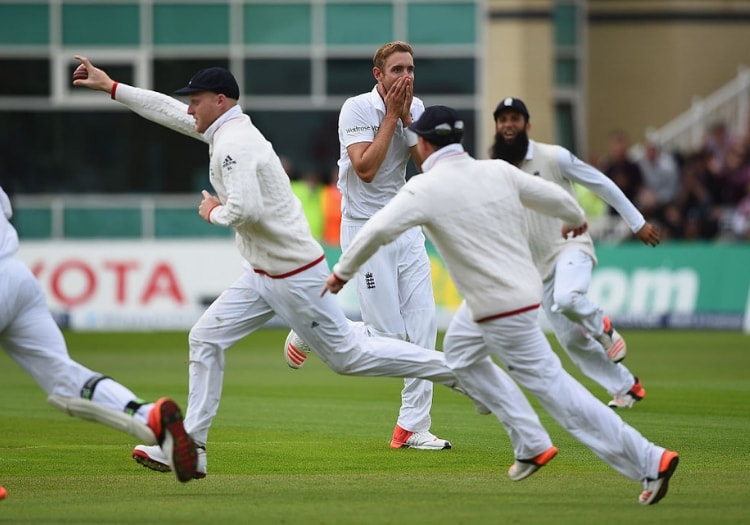
Built: 1841
You’ve chosen wisely.
Trent Bridge is in many eyes the most beautiful of the international grounds in England – possibly even ahead of the two big London arenas – and the grand history of the game in the East Midlands drips from the walls of the Victorian pavilion.
People flock from all over the land to watch England at
Trent Bridge.
Cricket was first played here due to its position as a coach stop on the River Trent.
The plot of land behind the Trent Bridge Inn – now a Wetherspoons – was opened as a ground by the pub’s proprietor and raiser of the All-England XIs, William Clarke, who had a stand named after him on the ground.
Nottinghamshire, drawing in particular on the mining communities in the north and west of the county, became one of the formidable county sides in the Victorian era.
The first hundred was scored on the ground in 1871, by WG Grace; one of the batsmen who challenged him in that period was Notts’ Arthur Shrewsbury.
Notts shared the ground with Notts County FC, the world’s oldest football club, until they moved to nearby Meadow Lane.
Trent Bridge hosted its first Test in 1899, and has been one of the most
popular stops ever since.

The Australian team takes the field during the first Ashes Test at Trent Bridge in 1921
Stuart Broad channelling Edvard Munch’s The Scream after razing Australia’s batting in the fourth and pivotal Test of the 2015 Ashes. Australia were all out for 60.
By contrast, expect runs in white-ball cricket, where teams have consistently battered 400-plus here in recent years.
Trent Bridge's most famous
World Cup moment is probably Zimbabwe’s humbling of Australia on World Cup
debut at the start of the 1983 tournament.

Address: Trent Bridge, West Bridgford, Nottingham, NG2 6AG
By car: From the south, exit the M1 on Junction 24 (A453) or Junction 25 (A52) and take the signs for West Bridgford or the cricket ground. From the north, take Junction 26 (A610) and follow the signs to West Bridgford or the cricket ground.
There are plenty of parking options around the Lace Market and the Ice Arena in the town centre. There are three car parks surrounding the ground, and two further down the Bridgford Road into West Bridgford itself.
By public transport: Nottingham station is well linked by East Midlands Trains, Cross Country and Northern. There are regular buses from the station to Trent Bridge, and a taxi rank on the northern side of the station, but it is only a 20-minute walk via the A60 - passing the nation's only Hooters - or better still along a saunter the Nottingham Canal up to the Trent Bridge itself – past Meadow Lane (Notts County), the City Ground (Nottingham Forest) and plenty of pubs.
Highest ODI
score: England 481-6 v
Australia, 2018
Lowest
ODI score: South Africa 83
v England, 2008
Trent Bridge is the place to go if you want big scores in limited-overs cricket. A near baseball-shaped ground has lent itself to six-hitting and you can almost expect 350-plus in 50-over games. In the red-ball arena, expect the kings of swing to make an impression here.
Mrs Bunn’s Cob Emporium
Much-loved café option opposite the ground guaranteed to fill you up. Made famous for its sumptuous cobs (Nottingham dialect for a bun or a roll, if any southerners were wondering, m'duck)
28 Musters Road, West Bridgford, Nottingham, NG2 7PL
The Hungry
Pumpkin
Favoured
vegetarian and vegan spot in Nottingham (circa £10)
38 High Pavement, Nottingham, NG1 1HN
MemSaab
The
best-known Nottingham curry house – a favoured spot of the Sky commentators –
and handily placed in the city centre near a number of hotels (£13-45)
12-14 Maid Marian Way, Nottingham, NG1 6HS
Restaurant
Sat Bains
High-end
British dining on the banks of the Trent (£110-130)
Lenton Lane, Nottingham, NG7 2SA
Yamas Meze
and Tapas
Popular Mediterranean joint right in the city centre (£11-20)
5 Thurland Street, Nottingham, NG1 3DR
City of Caves
Explore the network of the city’s caves, which have been used variously as a tannery, pub cellars and an air raid shelter.
Garner's Hill, Nottingham, NG1 1HF
Eden
Softplay
One to take the kids to. A four-tier indoor play centre for under-10s.
Arkwright Walk, Nottingham, NG2 2JU
Nottingham
Contemporary
Free to
visit and open daily from 10am to 6pm, the outstanding gallery of the East
Midlands is a great place to walk around for an hour or two, hangover or not.
Weekday Cross, Nottingham, NG1 2GB
Larwood &
Voce
High-end pub grub in a modern setting on the other side of the wall on the Fox Road side, named after the two great Nottinghamshire bowlers of the interwar period
Fox Road, West Bridgford, Nottingham, NG2 6AJ
Rescue
Rooms
The go-to gig venue and bar for after-hours – which links to the neighbouring Rock City and Stealth to create a reveller’s paradise on heady Saturday nights
Masonic Place, Goldsmith Street, Nottingham NG1 5LB
The
Lincolnshire Poacher
David
‘Bumble’ Lloyd’s favourite pub in Nottingham, this Castle Rock pub is a
favourite for real ale aficionados on the Mansfield Road heading out of the
city centre
161–163 Mansfield Road, Nottingham, NG1 3FR
Vat &
Fiddle
A stone’s
throw from Nottingham station, Castle Rock is the city’s most visible
present-day brewery, with this sister pub next door
12–14 Queensbridge Road, Nottingham, NG2 1NB
Ye Olde
Trip to Jerusalem
One of
several pubs laying claim to the title ‘oldest pub in the world’ – this unique
pub is cut into the rock beneath Nottingham Castle. A must-visit
1 Brewhouse Yard, Nottingham, NG1 6AD
Nottingham
Industrial Museum
A
fascinating insight into the industries – sadly most of them now part of
history – which made Nottingham famous the world over. And in the grand setting
of Wollaton Hall, where the stags that are etched onto the county emblem roam
free. If you really do have time to spare, you can walk across from here to the
rolling University of Nottingham campus and from there into town.
The Courtyard, Wollaton Hall and Deer Park, Wollaton, Nottinghamshire, NG8 2AE
Nottingham
Racecourse
The flat
season is in full swing when the World Cup wings through.
Colwick Park, Colwick Road, Nottingham, NG2 4BE
Up until a severe gale at New Year 1976, a tree stood just inside the boundary wall on the Bridgford Road side of the ground. It was believed to date back to the earliest days of cricket on the meadow behind Trent Bridge.
It was christened George Parr’s tree, after the great Notts batsman hit the ball over, through or round the tree for 28 consecutive summers.
Parr’s colleague, William Caffyn, wrote: “As a leg-hitter Parr will always be best known. His method was to reach out with the left leg straight down the wicket, bending the knee, and to sweep the ball round in a sort of half-circle.”
When Parr died in 1891 one branch was put in his grave, and another put on display in the Trent Bridge pavilion. The Parr Stand had been built in front of the tree in 1955.